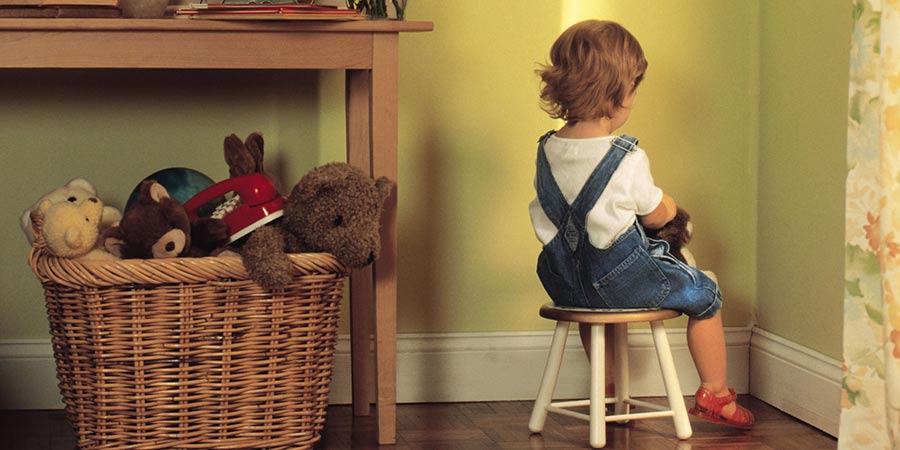What is time-out?
Time-out is known as social exclusion, it involves quickly removing the child from the environment where unacceptable behavior occurred, and give him/her a chance to calm down. It is a non-violent way to shape the behavior of a child.
Time-out can work starting 18 months, but it is important to act immediately when the un-wanted behavior occurs. The explanation should be immediate, brief and firm while maintaining eye contact with your child.
When the time-out is over, it is good to show your child positive feelings (e.g., a hug or a kiss). It is a way to tell your child that you still love him/her even when an unacceptable behavior occurred.
What is the goal of time out?
The main goal of time-out is educational, and it has two benefits:
- Immediate (short-term)
- Long-term
Short-term benefits consist on stopping the behavior immediately, and the long-term benefits help the child to achieve self-control and discipline.
Why do we use time out?
We use time out to stop and decrease a problematic behavior. It has many advantages for the parents and children:
- It is quick and easy for the parents to use
- It helps children to control their behavior and know what they must not do
How to use time out?
Time-out area should be accessible. It can be on a chair, step, corner, bedroom, or any other location where there are no distractions or fun items. It is important that the time-out location is safe and not frightening.
What is the acceptable amount of time spent in time out?
Generally, it is better to have short periods of time-out. For time-out to be effective, research studies have established that fifteen minutes is the maximum time that a child should be kept in time-out. Often parents use the “one minute per year of age.” For example, children aged from 2 to 5 should receive 2 to 5 minutes of time-out.
However, it is very important for the parents to specify and select the inappropriate behavior that they would like to see changed. It is very important to explain time-out to your child when parents and child are relaxed.
According to developmental psychologists, the child needs to know what his parents are expecting from him/her, the rules and what misbehavior will lead him/her to time-out.
Once parents explained what behavior will lead to time-out they should stick to it or else the child will not take it seriously.
How to evaluate when to use time-out?
Parents should evaluate each situation to determine what may be causing the misbehavior, such as a toy, frustration, hunger, or lack of sleep, and then address any underlying needs before using time-out.
It is not recommended to use time-out for all the unacceptable behaviors of your child, better to start slowly. When parents see success in decreasing the first selected behavior they can add another one.
What is the procedure for time-out?

What are the “3 f’s” of positive parenting?

It is important to know that time-out isn’t a punishment, its a way to help your child to learn how to cope with frustration and modify his behavior. When a child is in time-out, it is better to leave him in solitude for few moments to avoid reinforcing un-wanted behavior.
Once time out is over, it is better to have a quick chat with the child let him express his feelings and praise him for completing time-out.
What are some disadvantages?
There are few disadvantages to using time-out:
- Parent/child bond can be damaged if time out is used in an excessive way, it can lead to feeling of anxiety and insecurity.
- In some cases, time-out technique stops working when children grow older and start the rebelling phase.
- Sometimes time-out technique is mis-used to the point of becoming abusive.
What to do instead if time-out is not working for your child?
In case you notice that time-out is not working for your child, a parent can give the message in many different ways depending on the age of the child. For example, a parent can say: “I am not going to play with you until you stop”; use distraction e.g.,” look at the bird ”; prevention e.g.,” avoid doing a certain activity when you know your child have a long day” or redirection: send the message to the child in different ways. In addition, ignoring the child can be helpful too.
Conclusion
Time out is used to encourage a positive behavior. It is important to know that what work on a child might not work on another. knowing your child, his personality, and temperament is important to know which strategy is the best for him.
Time-out should not be used several times per day. If parents find that it is the only way to stop an un-wanted behavior, then they should investigate more about the cause of this repeated behavior and seek professional help.
Misbehavior is a part of child’s development, kids are not born knowing all the rules, when they misbehave they are experimenting many things and they are learning. Our job as parents is to keep setting limits to help our kids learn and grow.
Always remember that “ a person’s a person no matter how small” your kid can move mountains when he is respected! Dr seuss


